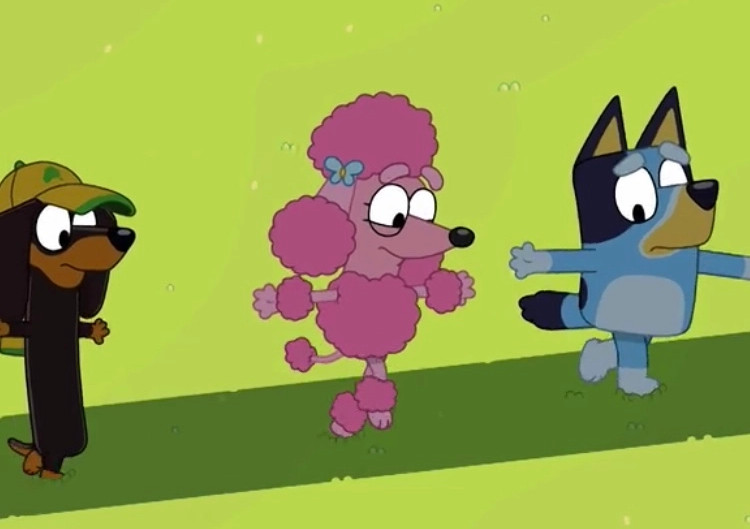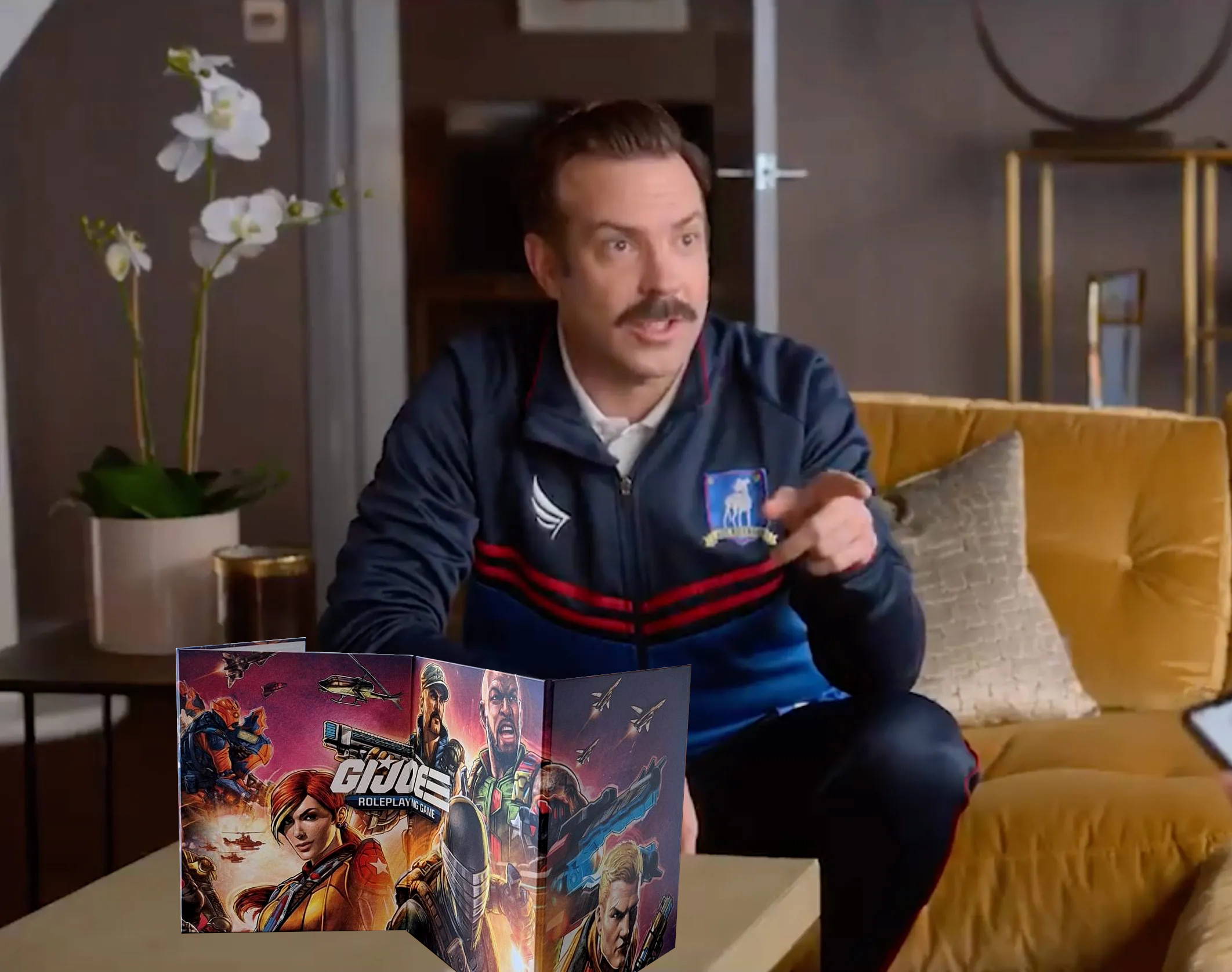This episode of Behind The Screens is called “Bluey Rules”.
And yes, I’ll get to the RPG advice for Game Masters eventually. But first!
For those unfortunate enough to be uninformed, Bluey is an Australian animated series about an adolescent blue dog named Bluey Heeler, and how she spends her time with her family and friends. Though intended for children, I legitimately and unironically love this show. I know I indulge in Paw Patrol nerdity from time to time, but when my kids outgrew Ryder’s team of rapid deployment dogs, I stopped watching it. However, if my kids ever get over Bluey, that’s their loss. As long as Ludo Studio keeps producing new episodes, I’ll keep watching.
I bring this up in a blog about GMing tabletop RPGs because of an episode of Bluey called Shadowlands. It illustrates the importance of rules better than any GM guide, RPG blog, or other gaming resource I’ve ever seen. I discussed the episode with Jason Keeley on the Upshift episode that would have gone up two weeks ago if it weren’t for technical difficulties. We skipped the discussion when we rerecorded, so I thought it would serve as a worthy topic for Behind The Screens.
Rules According To Bluey
Shadowlands manages to squeeze two lessons about the value of rules into one seven minute episode. First, it illustrates the issues with playing a game (in this case, What Time Is It Mr. Wolf) by the letter of the rules. Second, it shows how the confines of following the rules can create truly memorable moments.
What’s Wrong With Mr. Wolf?
The episode starts with Bluey playing What Time Is It Mr. Wolf with her friends Coco and Snickers. Coco takes on the role of Mr. Wolf. As is standard in What Time Is It Mr. Wolf, the players ask the eponymous questions, and then Mr. Wolf answers with a number between 1 and 12. The first time Bluey and Snickers ask Coco “What Time Is It Mr. Wolf?”, Coco says 12. Bluey and Snickers move 12 steps closer to her. They ask her what time is it again. Coco says 11. Bluey rolls her eyes, and they move 11 steps closer.
Coco only says it’s dinner time when they’re within arm’s reach of her. She easily catches them, annoying Bluey. Bluey tells Coco that she can’t just call the biggest numbers. “Why not?” Coco asks.
Why indeed, Coco.
Playing Without A Social Contract
In this scene, Coco highlights the game designer’s lament. I’ve especially experienced this working on Essence20, where simplicity is a goal of the system.
Conventionally speaking, the fewer rules in a game, the simpler players consider it. However, there’s a line when a game’s rules are simpler than they need to be. No rule prevents Coco from calling out the highest numbers in What Time Is It Mr. Wolf, and that’s clearly the best strategy.
To answer Coco’s question, you have to look outside of the rules, because the consequences happen outside of the game.
What Time Is It Mr. Wolf is effectively tag with a dramatic element. When will Mr. Wolf say it’s dinner time? How close will the players get? Every call and response ratchets up the drama, until the explosive switch in play style, from slinking and communicating to running and screaming. None of which is stated in the rules, but it’s the experience the rules craft. So when Coco asks why she shouldn’t just call out the best number for her, the real answer is “why would anyone play with her when she plays like that?”
She’s playing within the rules, and it’s ruining the game.
Shadowlands Synopsis
Before Bluey can try to explain why she doesn’t enjoy Coco’s way of playing What Time Is It Mr. Wolf, the pups’ parents call them for lunch. Instead of just walking over to the picnic basket, Bluey, Coco, and Snickers make a game of it. Called Shadowlands.
Shadowlands shares a lot in common with The Floor Is Lava, in that an unnecessary hurdle turns a straightforward area into an obstacle course. In this case, anywhere the sun touches is crocodile-infested water.
Again to compliment the show’s writing, not only does this capture the kind of imagination game children improvise, it makes several minutes of kids running in shadows engaging and clever, culminating in a moral.
When Snickers’ little legs are too short to make a jump that Bluey and Coco already crossed, Coco suggests that maybe “just this time, we can have crocodile-proof shoes.” Bluey is not having any of that! “You can’t change the rules, Coco,” an exasperated Bluey exclaims.
Instead, Bluey puts her back to the sun and has Coco climb on her so they create a new shadow that bridges the gap Snickers can’t cross.
“This is fun!” says Coco.
“I told you.” Bluey replies.
But why is it fun?
Rules Make The Game Fun
Previously, I’ve quoted how author Bernard Suits defines the playing of a game in his book The Grasshopper: Games, Life and Utopia. “The voluntary attempt to overcome unnecessary obstacles”.
That’s exactly why Bluey gets upset with Coco. The only reason Snickers can’t step out of the shadows is because a rule creates an unnecessary obstacle to overcome, thereby making it a game. If they overcome the obstacle by creating new rules, they aren’t playing a game. They’re just adding rules to their lives.
Now, it could be argued that Coco’s heart is in the right place. Shadowlands disproportionately challenges Snickers and his little sausage dog legs. Coco could be trying to accommodate her friend and make the game’s difficulty equal across all players. However, Coco’s established willingness to play strictly by the rules as written in their previous game implies she’s not doing this for Snickers’ sake.
Different players play their games in different ways and for different reasons, and Coco plays to win. Meanwhile, Bluey plays for the experience. Sometimes, following the rules creates that experience, sometimes the experience requires reading between the lines of the rules. That means even in a cooperative game, these two types of players can be at odds. But that doesn’t mean they can’t find a way to have fun.
Every two weeks, Ryan Costello uses his experience as a Game Master, infused with popular culture references, to share his thoughts on best GMing practices to help his fellow GMs. Often deconstructing conventional wisdom and oft repeated GMing advice, he reminds his fellow GMs that different players play the game in different ways, and for different reasons.










